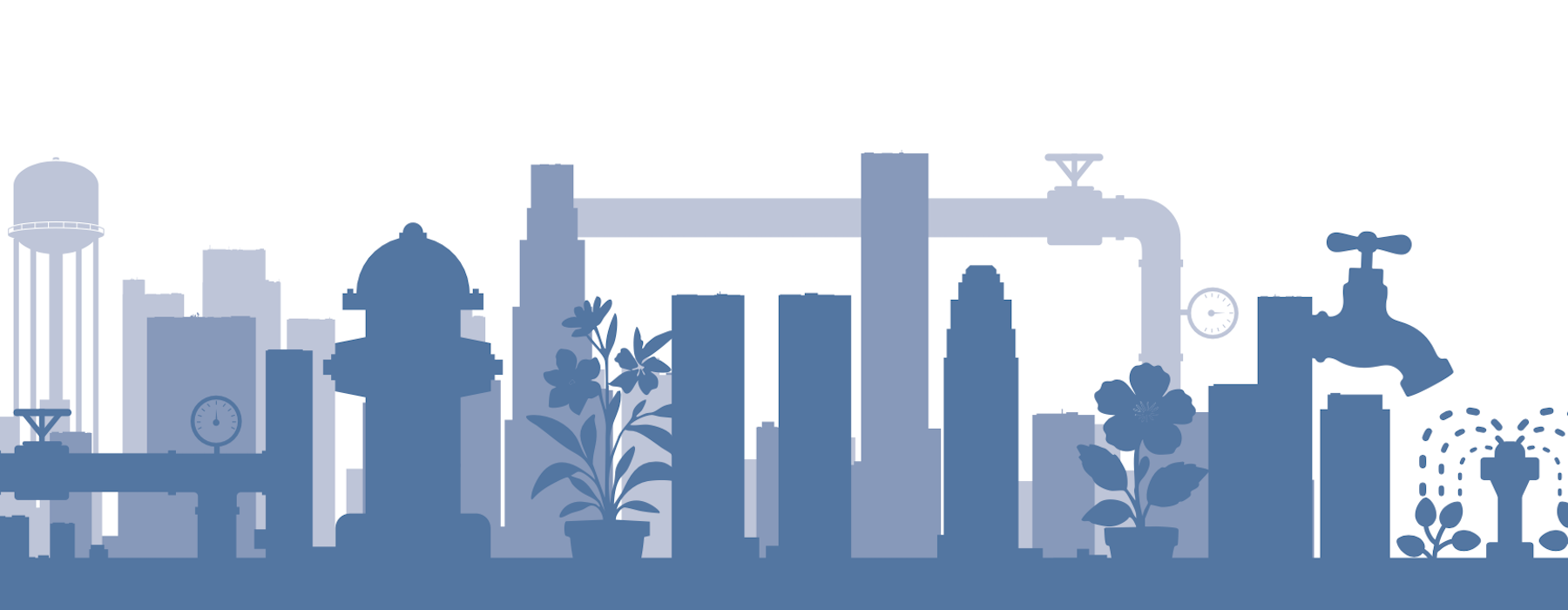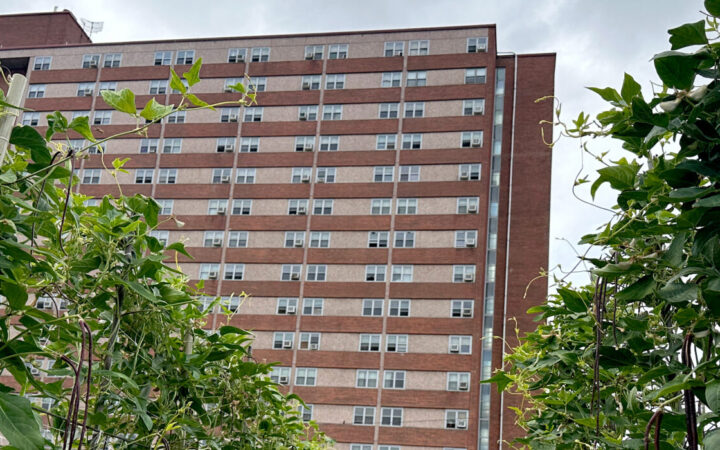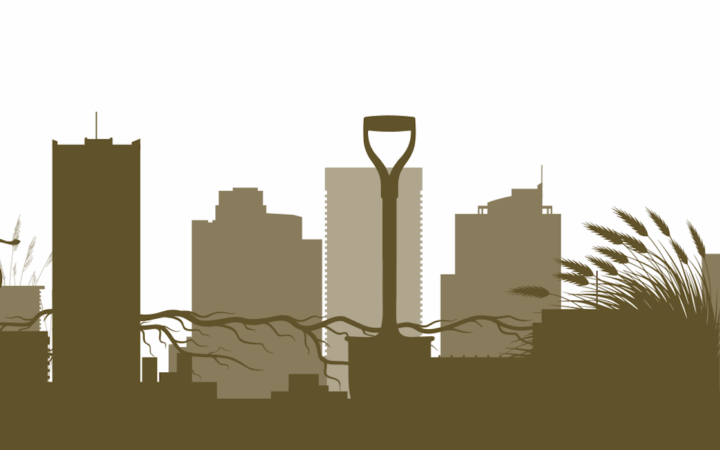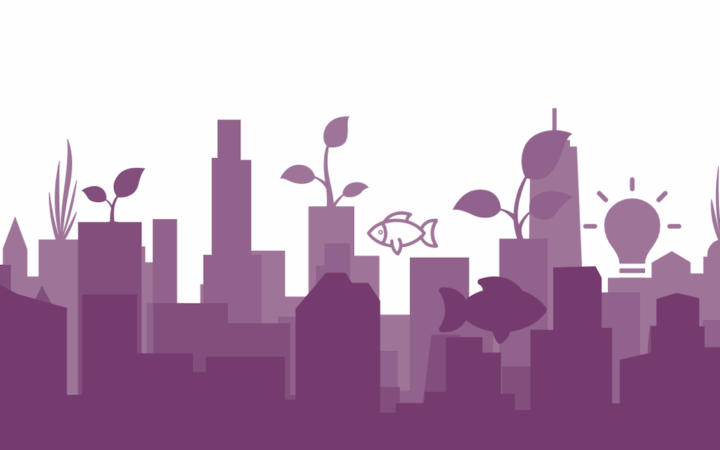This fact sheet distills the information in the Water Access section of “Urban Agriculture and Innovative Production: A Guide to Local Policy” into key takeaways for producers and policymakers.
Local Policy Barriers and Strategies for Urban Agriculture
Water is essential for growing food, but urban farmers often face unique challenges in securing access to water. Unlike rural farmers who may draw from private wells or irrigation canals, urban growers typically depend on municipal water systems built for residential and commercial use. These systems are dependable but costly for agriculture. As droughts and extreme weather events increasingly strain water supplies—especially in cities already facing water scarcity—reliable and efficient water access becomes even more critical. Cities can support urban farmers by making water access options more transparent and affordable.
How Urban Farmers Access Water
PERMANENT MUNICIPAL CONNECTIONS
Installing meters and piping to tap directly into city water mains.
HYDRANT PERMITS
Applying for city permits to temporarily access water via nearby fire hydrants.
RAINWATER HARVESTING
Collecting and storing rainwater using barrels, cisterns, or tanks.
RECLAIMED WATER
Using treated, non-potable wastewater made available by the city for safe irrigation.
PRIVATE WELLS
Drilling a well to access groundwater, though most cities retain subsurface water rights within city limits.
SURFACE WATER IRRIGATION
Accessing ditch or canal irrigation systems, typically managed by a local government authority like an irrigation district.
Los Angeles’s Recycled Water Program
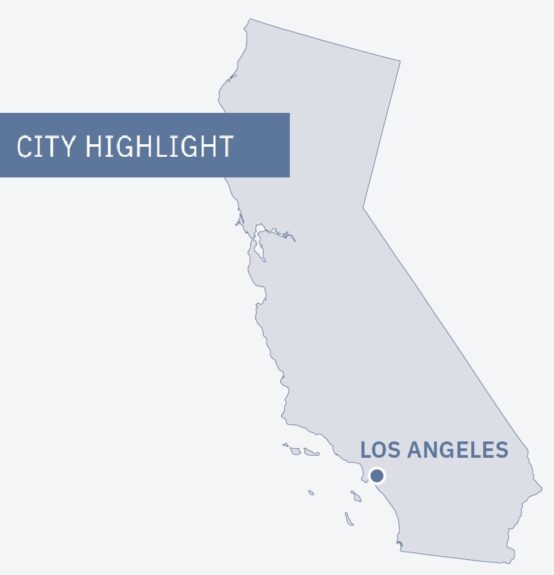 Faced with chronic water shortages, Los Angeles has invested in a recycled water program since 1979, when the city began irrigating two Griffith Park golf courses with treated wastewater. Today, recycled water is used across the city for non-potable purposes, including park and facility irrigation, groundwater recharge, and industrial cooling. The Los Angeles Department of Water and Power also offers free recycled water at two public fill stations, where residents can collect up to 300 gallons per visit. While currently under-utilized, this resource has potential to be valuable for urban farmers during drought periods, when outdoor watering with potable water is restricted.
Faced with chronic water shortages, Los Angeles has invested in a recycled water program since 1979, when the city began irrigating two Griffith Park golf courses with treated wastewater. Today, recycled water is used across the city for non-potable purposes, including park and facility irrigation, groundwater recharge, and industrial cooling. The Los Angeles Department of Water and Power also offers free recycled water at two public fill stations, where residents can collect up to 300 gallons per visit. While currently under-utilized, this resource has potential to be valuable for urban farmers during drought periods, when outdoor watering with potable water is restricted.
Water Access Barriers and Policy Strategies
Urban farmers often depend on municipal water systems not designed with agriculture in mind, leaving producers to navigate residential rate structures, unclear permitting processes, and other restrictions that do not account for food production. Without a reliable source of water, urban farms and gardens simply cannot operate—making water insecurity not just a logistical hurdle but an existential threat to farm businesses and community gardens. Below are some of the most common barriers urban producers face in securing water access and policy strategies that cities can adopt to address them.
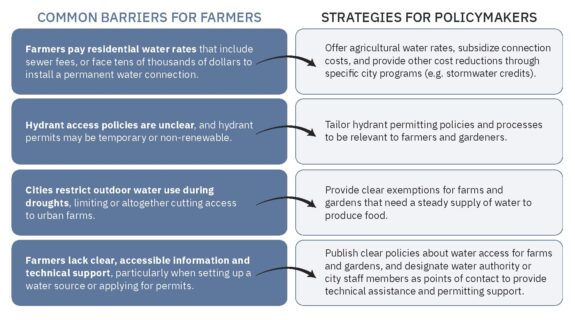
Best Practices for Farmers to Secure Water Access
▶ Understand local water rates. Review your local water utility’s rate schedule and ask your water utility whether reduced rates or special programs are available for agricultural or irrigation use.
▶ Explore access options. Research the costs, requirements, and limitations of different water sources— such as hydrant permits, permanent connections to water mains, or rainwater harvesting systems—to determine what’s most feasible for your site.
▶ Look for green infrastructure incentives. Identify any financial incentives your city or water utility may offer for green infrastructure, green space, or permeable surfaces.
Suggested Citation
Ctr. for Agric. & Food Sys., Water Access: Local Policy Barriers and Strategies for Urban Agriculture (2025), https://cafs.vermontlaw.edu/resource-library/water-access.
